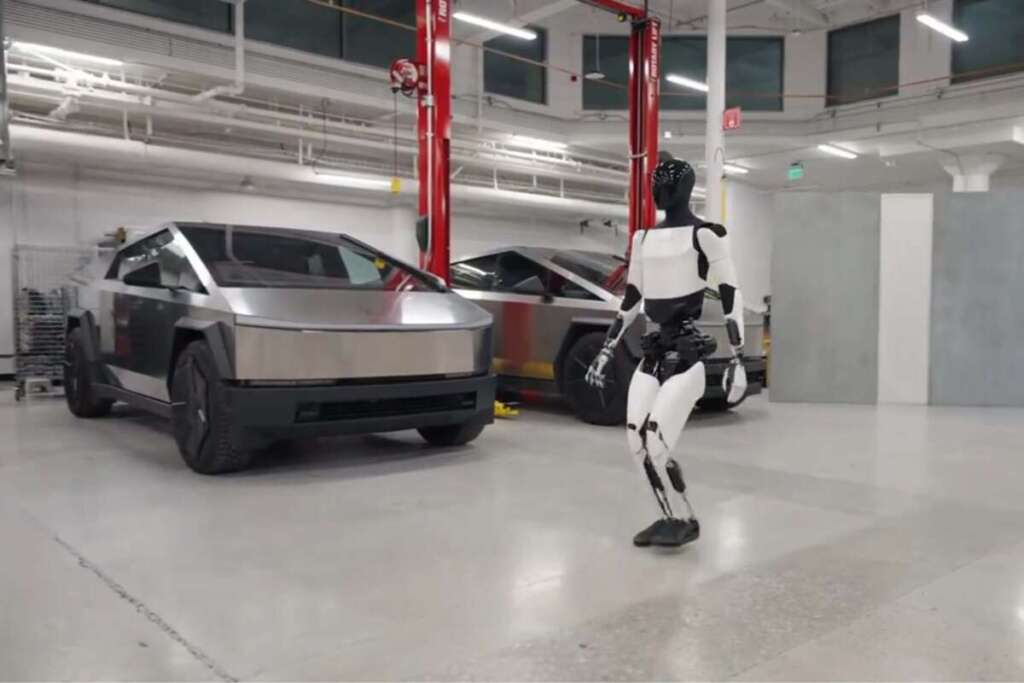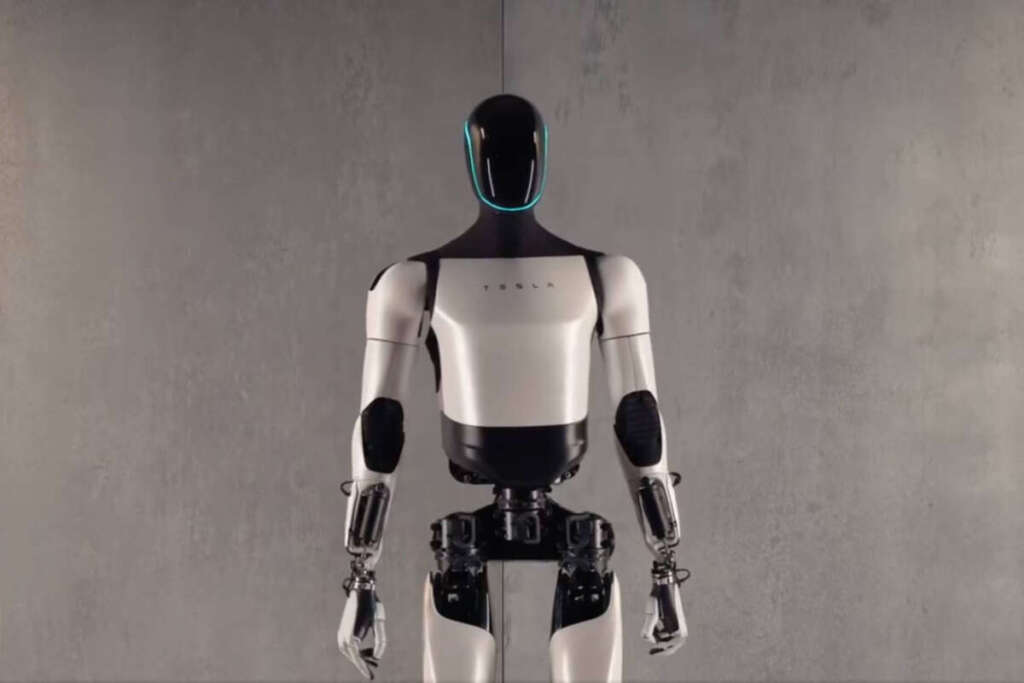Tesla has introduced the Optimus Gen 2 humanoid robot, showcasing remarkable advancements in agility, appearance, and functionality. The Optimus Gen 2 is 10 kg lighter, 30% faster, and more capable than its predecessor. Notable improvements include a redesigned body for a more human-like appearance, new hands with 11 degrees of movement freedom, tactile sensors on fingers, and an articulated toe section for improved foot geometry.
Key Features of Optimus Gen 2:
- Tesla-designed actuators and sensors
- 2-DoF (degrees of freedom) actuated neck
- Actuators-integrated electronics and harnessing
- 30% walk speed boost
- Foot force/torque sensing
- Articulated toe sections with human foot geometry
- 10 kg total weight reduction
- Improved balance and full-body control
- Faster, 11-DoF brand-new hands with tactile sensing on all fingers
- Delicate objects manipulation (e.g., holding an egg)

The Optimus Gen 2’s enhanced agility is demonstrated in tasks such as walking, crouching, and delicately manipulating objects without breakage. The robot exhibits improved balance, smoother movements, and a more streamlined appearance with white bodywork reminiscent of Tesla’s Model S. Despite its lighter weight, the Optimus Gen 2 maintains durability and functionality.
While Tesla’s humanoid robot prototypes continue to advance, it’s essential to note that they are not intended for production or sale at this stage. These prototypes serve as technological milestones in Tesla’s exploration of robotics, aiming to create a humanoid robot capable of undertaking tasks that humans prefer to avoid.
The pace of development in the field of humanoid robots is accelerating, and major advancements are expected in the coming years. As Tesla continues to refine its prototypes, the ultimate goal remains to seamlessly integrate humanoid robots into various applications, replacing human labor where feasible.
Note: The Optimus Gen 2 robot is a prototype and not designed for production or commercial use.
Images & video Source: Tesla








